The global AR market is projected to reach $ 70.01 billion by 2023. Investment in AR has grown steadily over the past few years and is now generating renewed interest from major brands. In the context of marketing, augmented reality enables brands to offer unique and immersive digital experiences as well as engaging more consumers.
Gartner predicts that by 2022, 70% of companies will experiment with immersive technologies, and 25% will be deployed in a production environment. While virtual reality (VR) creates a lot of buzz and inspires everyone with grandiose sci-fi ideas, AR is much more marketable. Experts predict AR will continue to outperform VR in market share:
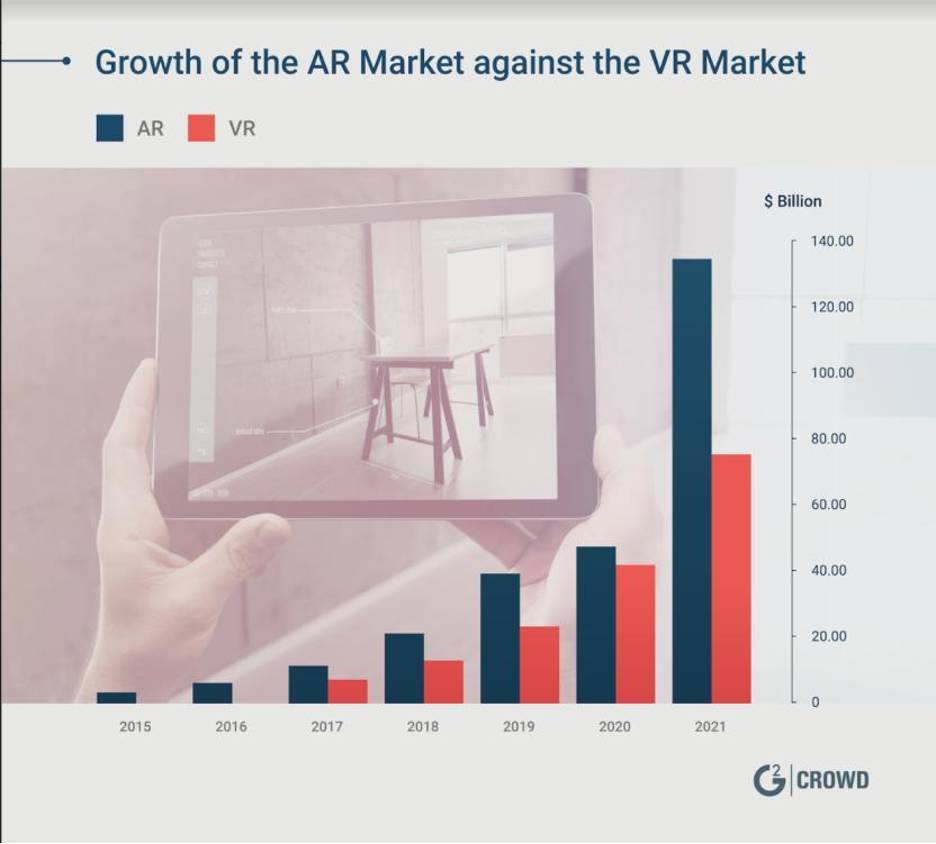
Brands are increasingly using this technology to engage consumers and increase sales. ModiFace, recently acquired by L’Oreal, makes AR apps for brands. Sephora Virtual Artist, an impressive example of ModiFace technology, allows customers to see how different shades of different forms of makeup will look on their face, without having to go to the store and apply it in real time:
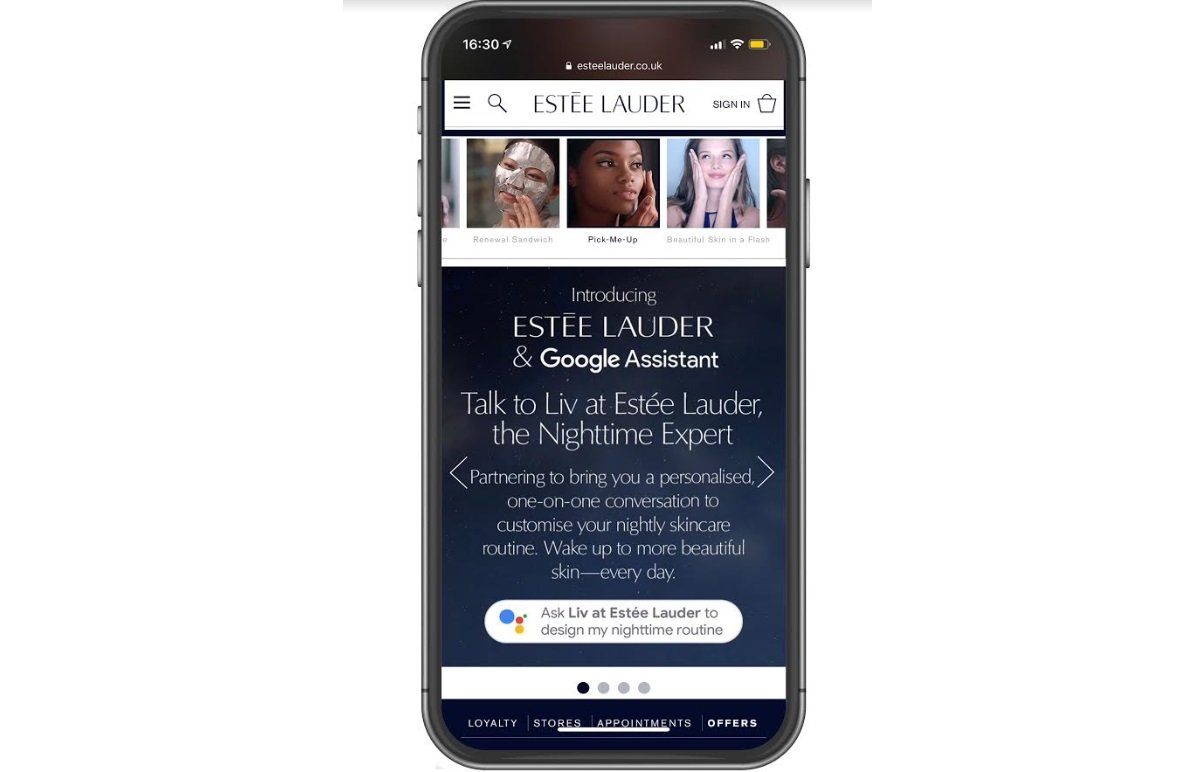
IKEA also has its own AR app called IKEA Place, which lets you take pictures of your room using your smartphone’s camera (as of iOS 11.0.1 only for now) to “test” IKEA furniture in it. You can move the hardware and see how it looks from different angles:
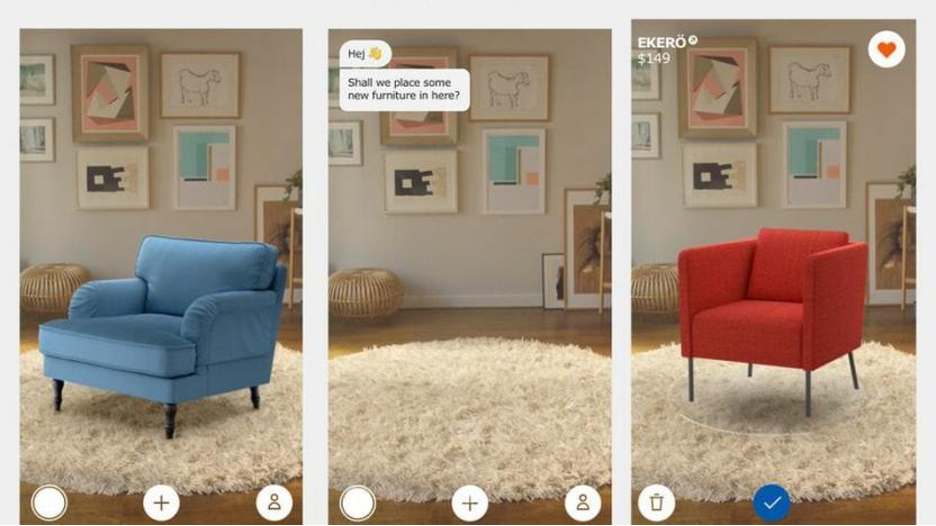
ASOS – Virtual Catwalk
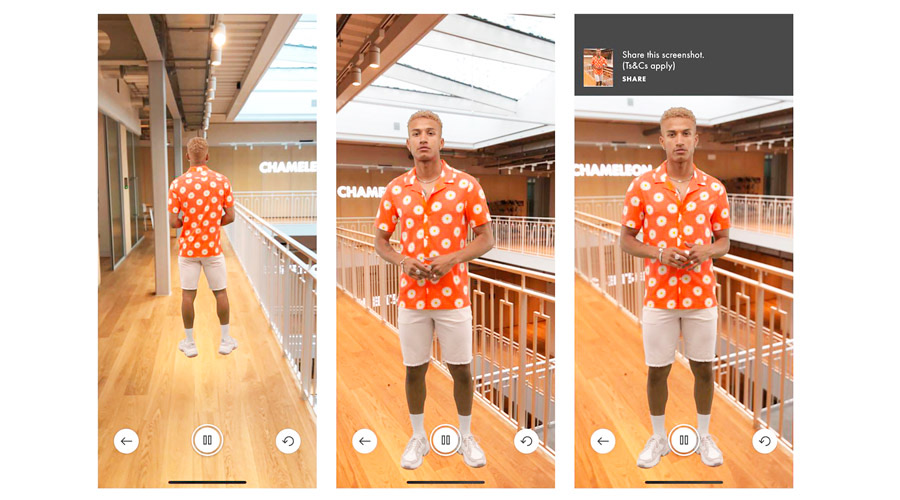
Asos is no stranger to mobile innovation as it has previously integrated visual search into its handy mobile app. Asos has become fully committed to AR with an experimental feature called Virtual Catwalk, which aims to help app users visualize 100 Asos Design products. This feature works when a customer points their smartphone camera to a suitable flat surface and presses the “AR” button on the product page in the app. The models then appear virtually, giving the shopper a new and tighter way to view the products. Although this feature will not necessarily help solve the return issue — as there is no way to determine how the product will fit or look on the customers themselves. By bringing the model (and product) into the user space, the online shopping experience becomes more immersive and fun.
Gucci – Try on Your Shoes in AR
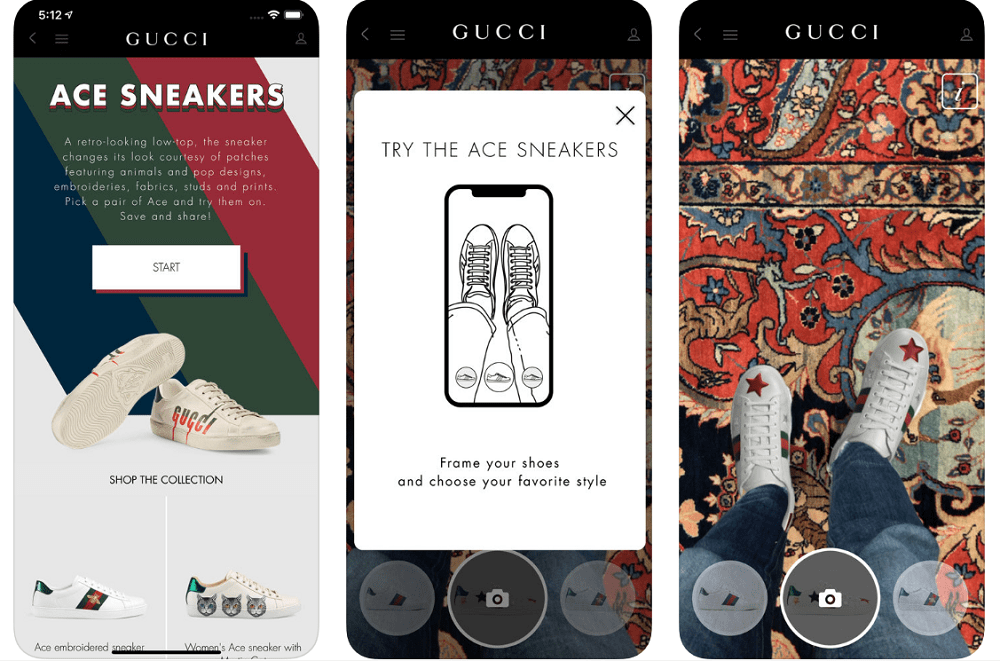
One of the main reasons retail brands are investing in AR technology is to help customers make smarter product decisions. Gucci is the latest luxury brand to do so, adding augmented reality functionality to its app for users to try on sneakers. With the smartphone camera pointing downwards, users can select a digital overlay from 19 different sneakers on their feet by swiping left or right to select a different pair. The app also allows users to take photos, which can then be shared on social networks or messaging apps. By providing customers with a visual representation of what a product will look like in real life, the technology could theoretically reduce profitability and increase customer satisfaction.
Toyota – Car Display
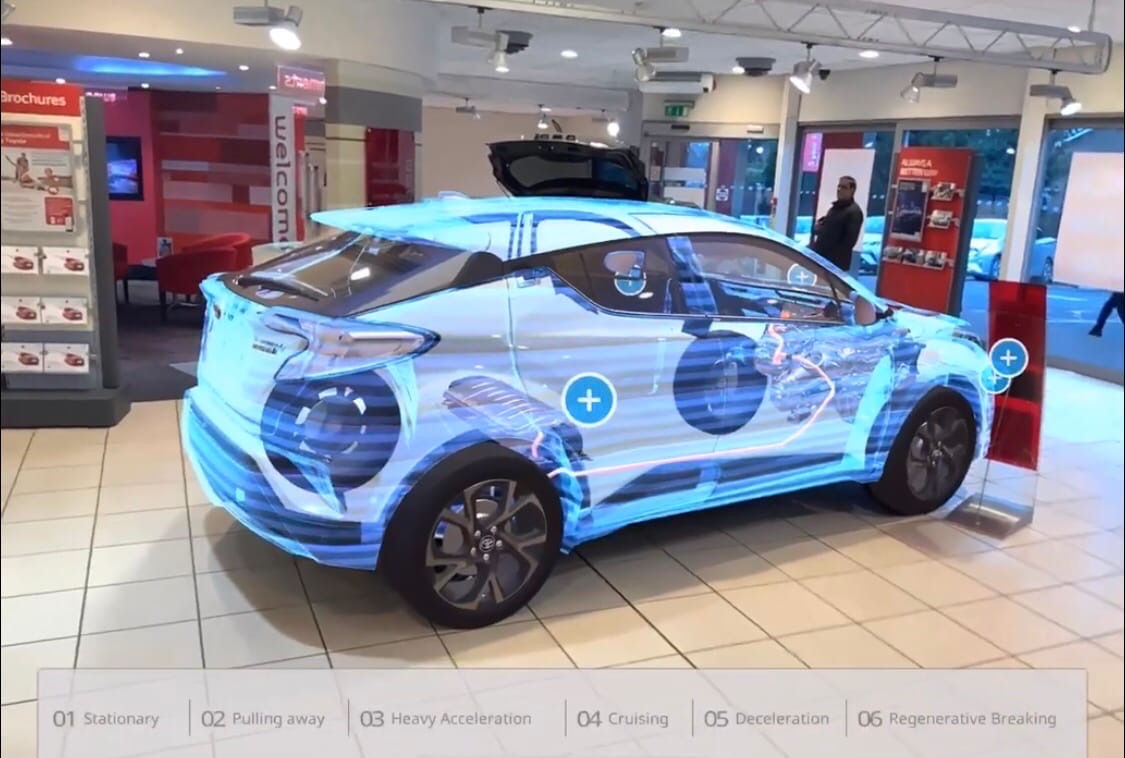
Toyota launched a Hybrid AR app to give customers a better understanding of how its new C-HR model works. The app, created in partnership with Brandwidth, overlays images of hybrid drivetrain internals on physical vehicles. Customers can interact with the app to learn more about the main functions of the vehicle, such as the hybrid engine, battery, and fuel tank. Buyers can also learn in detail how the vehicle uses energy and how the transmission works in different driving modes. For automotive brands, technology is becoming a key part of the acquisition process, allowing customers to experience a product in new and different ways — and, ideally, push them to buy it.
Rekorderlig
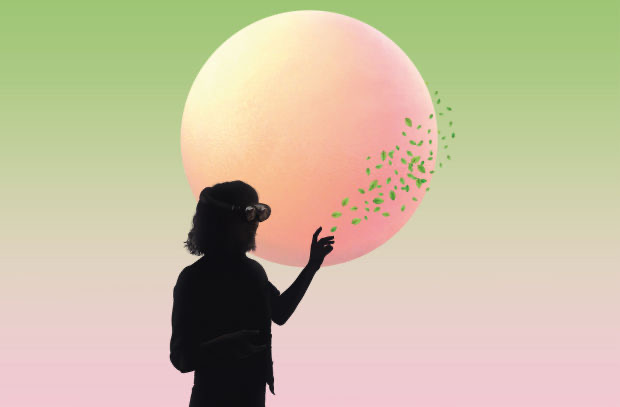
Rekorderlig cider makers are no exception as the brand launched Rekorderland, a mixed reality venue in London’s Southbank area for the summer.
Visitors wear Magic Leap AR headsets to view holographic images and light waves together, blurring the boundaries between real and virtual worlds. Visitors will also be able to update their Rekorderlig drinks using Snapchat codes in the bar area. Connie Harrison, director of immersive experiences at Rekorderlig, explained that «Rekorder-land combines the physical and the digital to instantly immerse people in a magical place.»
VF — Virtual Mannequins
![]()
VF – the owner of brands such as Timberland and Vans — opened a new retail space (Axtell Soho) in London to showcase how the company uses technology to bring its brand stories to life. One of the key features of the space is the avatar-based virtual mannequins that show various seasonal 3D images. Visitors can use touchscreens to view clothing in a variety of scenarios, and can also change characteristics such as lighting and context. According to Marketing Week, Axtell Soho is not open to the public, but will be used as a platform to test and explore new technologies.
YouTube – Online Makeup
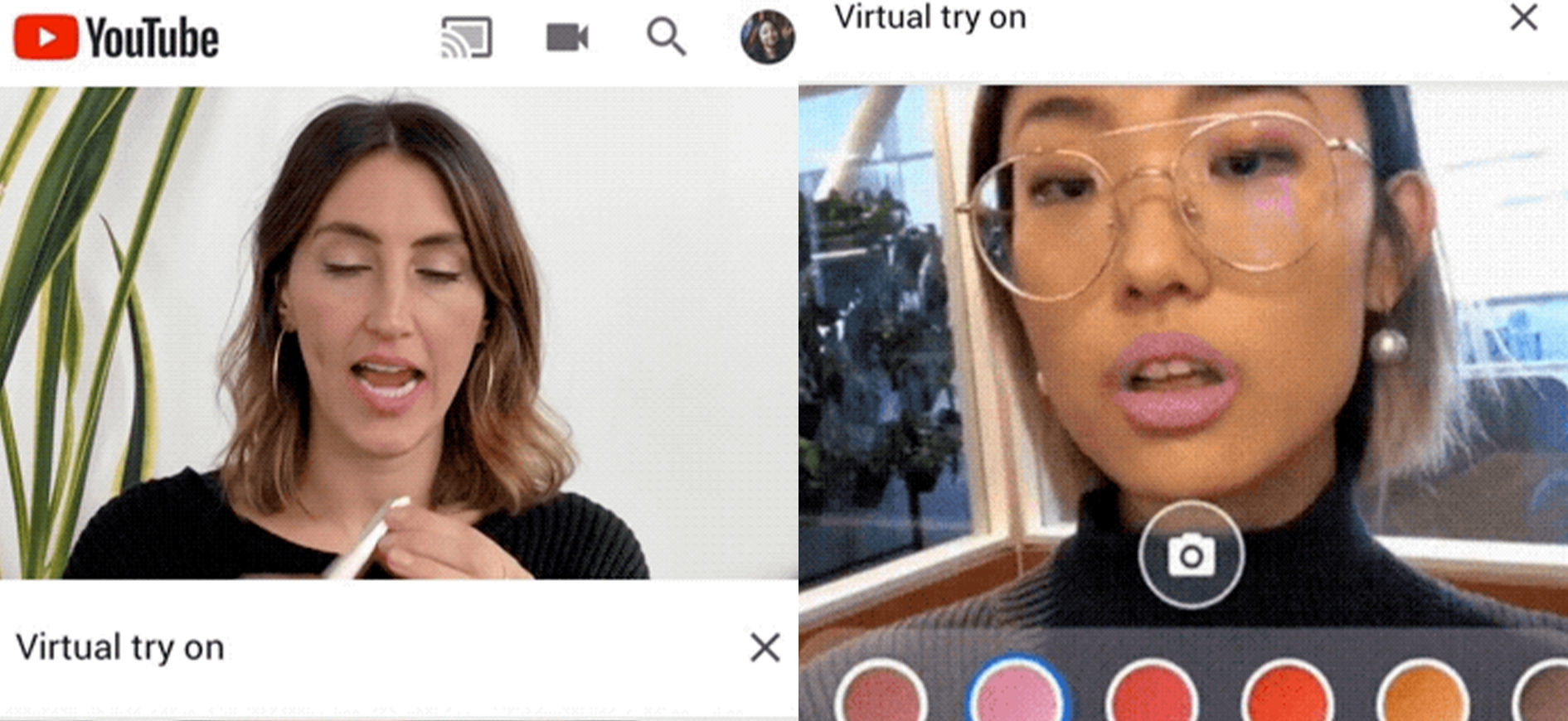
Makeup tutorials remain a popular form of YouTube video content. Now, the platform is bringing this idea to life as YouTube introduces its Augmented Reality Fitting feature. Similar to Modiface, this feature will allow users to virtually try on makeup through the YouTube app. However, it will also function as a split-screen “interactive advertisement” allowing users to watch a tutorial and try on makeup at the same time. MAC was one of the first brands to experiment with this feature.
Thanks to AR implementation in your company, you will receive a continuous cycle of product development, delivery and integration with existing systems and ecosystems. It will also boost sales by extending the time it takes to visit your website or app, so augmented reality services will help your company get to market faster and compete with global companies.